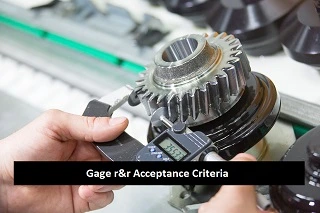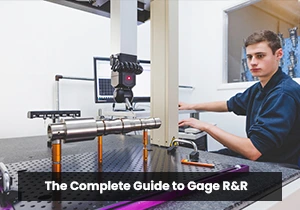Practical Examples on Gage R&R Analysis
Gage R&R (Gauge Repeatability and Reproducibility) is a statistical tool used to evaluate the accuracy and reliability of measurement systems in various industries. This method helps in determining whether the variation in the output of a measurement system is acceptable or not. Here we discuss some key aspects and examples of Gage R&R studies.
A Gage R&R study evaluates the total variation in measurements which is attributed to two primary sources: the variation due to the measurement system (repeatability and reproducibility) and the variation in the parts themselves. This study is crucial for ensuring that the data collected from a measurement system is reliable for making data-driven decisions.
Repeatability and Reproducibility: Repeatability refers to the variation observed when the same operator measures the same part multiple times with the same device. Reproducibility, on the other hand, is the variation observed when different operators measure the same part with the same device.
Example Studies of Gage R&R
1. Control Chart for Monitoring Fill Weights of Cereal Boxes
Context: A company producing cereal boxes wants to ensure that the fill weights (the amount of cereal in each box) are consistent. This is critical for quality control and customer satisfaction.
Gage R&R Study Purpose: Before implementing a control chart (a tool used for monitoring process stability over time), the company conducts a Gage R&R study. This study is essential to confirm that the measurement system used to weigh the cereal boxes is reliable.
Process of Study:
- Repeatability Assessment: The same box of cereal is weighed multiple times by the same operator using the same scale. This step assesses the repeatability of the measurement system, which is crucial for understanding if the scale gives consistent readings when used under the same conditions.
- Reproducibility Assessment: Different operators weigh the same cereal box using the same scale. This step evaluates reproducibility, determining if the measurement varies significantly between different operators.
Outcome: The study will reveal whether variations in the weight measurements are due to the measurement system (like scale calibration) or the actual differences in the product. A reliable measurement system is critical for meaningful control chart analysis.
Read More: Six Sigma vs Lean - Similarities And Differences | Complete Comparison
Example Studies of Gage R&R
2. Supplier Producing Parts with Specific Dimensions and Tolerances
Context: A supplier manufactures parts that must meet specific dimensional requirements. For instance, a component with a target dimension of 43.11 mm and a tolerance of ±0.13 mm.
Gage R&R Study Purpose: To ensure that the measurements taken for these parts are accurate and consistent, the supplier undertakes a Gage R&R study. This study is crucial for maintaining quality standards and meeting customer specifications.
Process of Study:
- Measurement System Analysis: Multiple parts are measured by several appraisers using the same measurement tool. This analysis includes examining the part variation (difference between individual parts) and measurement system variation (variation due to equipment and appraisers).
- Assessment of Part and Measurement Variation: The study looks at part variation, equipment variation (repeatability), and appraiser variation (reproducibility). For instance, if all parts are measured very close to the target dimension with minimal deviation, it indicates low part variation but can also mask measurement system issues.
Outcome: The study aims to distinguish between the natural variability of the parts and the variability introduced by the measurement process. An effective Gage R&R study helps in understanding whether the measurement system is capable of detecting the actual variations in the parts within the specified tolerance levels.
These examples illustrate how Gage R&R studies are integral in verifying the reliability of measurement systems in different contexts in various industries. Whether you're in manufacturing, engineering, or any field that relies on precise measurements, embracing Gage R&R can lead to significant improvements in your product quality and process efficiency.
Remember, measurement system analysis, including Gage R&R, is not just a one-time activity but an integral part of ongoing quality control services for continuous improvement. We encourage you to dive deeper into the world of Gage R&R, explore more examples, and apply these principles to your specific context. By doing so, you'll enhance the credibility of your measurement data and significantly contribute to the overall success and quality assurance of your organization.


